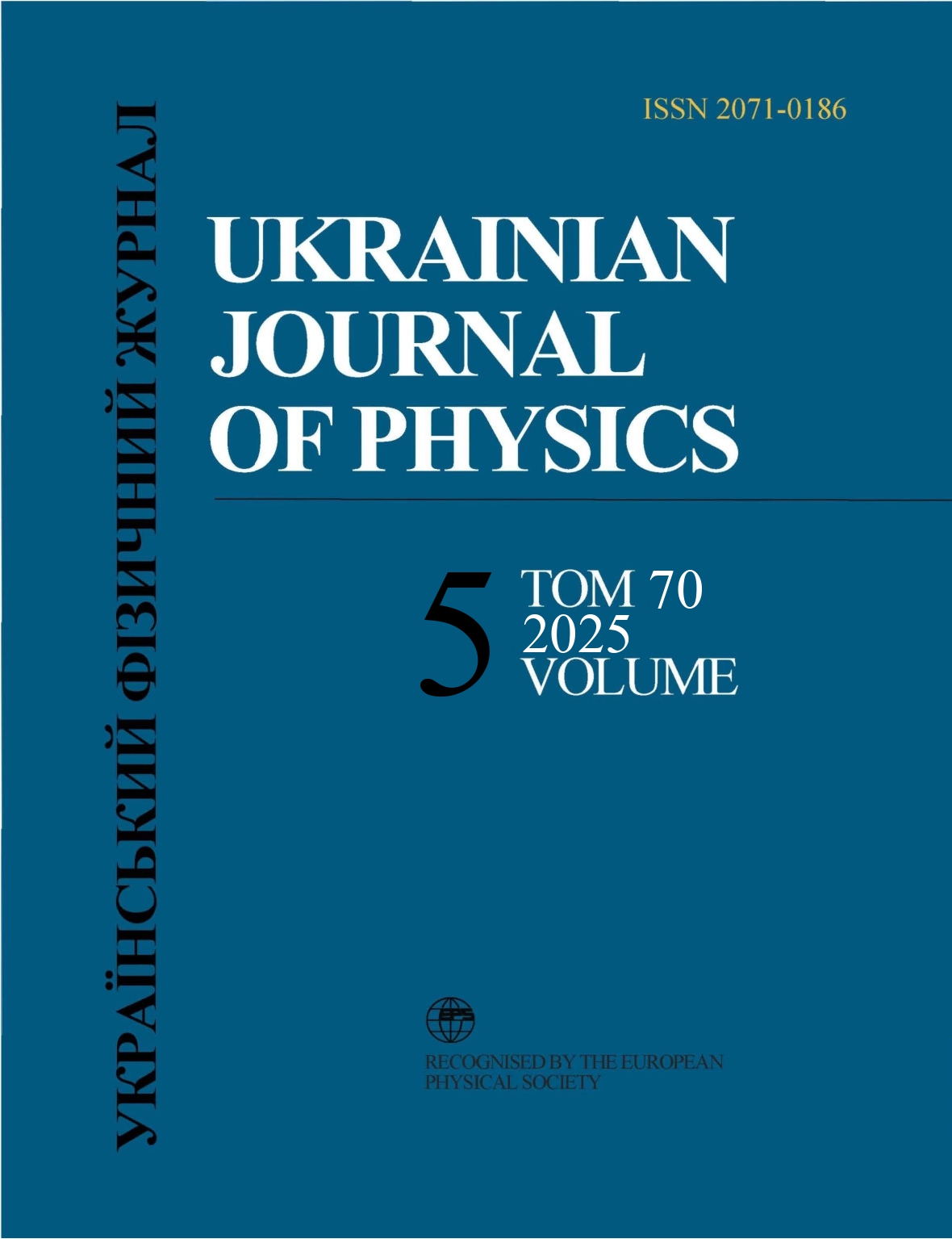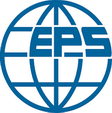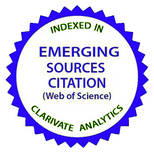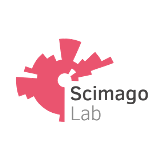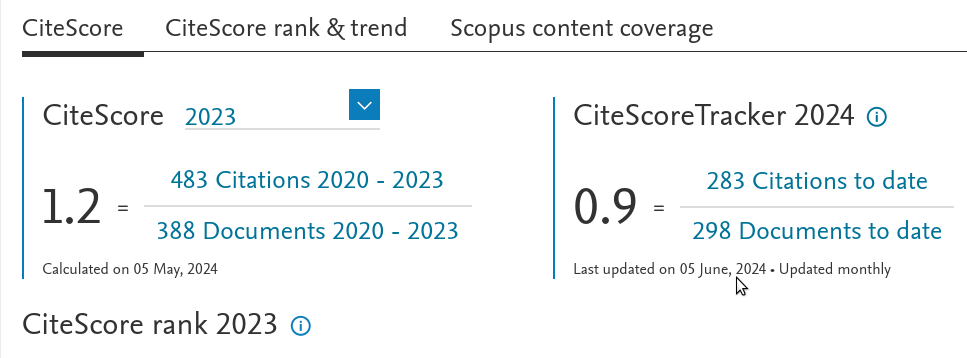Transcutaneous Influence of Laser Radiation on the Oxygen Saturation of Venous Blood
DOI:
https://doi.org/10.15407/ujpe70.5.333Keywords:
oxyhemoglobin, venous saturation, photodissociation, laser irradiation, arterial saturationAbstract
The work is devoted to the determination of the external transcutaneous laser radiation effect on the relative concentration of oxyhemoglobin in venous blood. It is shown that transcutaneous laser irradiation of biological blood-filled tissue changes the venous blood oxygen saturation value only if a certain level of laser-stimulated photodissociation of oxyhemoglobin in arterial blood is reached (more than 6% decrease of the arterial blood oxygen saturation value). From our point of view, this process is not a direct laser-stimulated photodissociation of oxyhemoglobin in venous blood, because the dissociation curve is situated in the region with high values of partial oxygen pressure. The decrease in the relative concentration of oxyhemoglobin in venous blood is most likely related to compensatory mechanisms of hypoxia in peripheral tissues, accounting for the recombination of oxyhemoglobin molecules during their passage from the point of irradiation to the point of oxygen extraction by cells.
References
1. Q. Gibson, S. Ainsworth. Photosensitivity of hæm compounds. Nature 180, 1416 (1957).
https://doi.org/10.1038/1801416b0
2. V. Mansouri, B. Arjmand, M. Rezaei Tavirani, M. Razzaghi, M. Rostami-Nejad, M. Hamdieh. Evaluation of efficacy of low-level laser therapy. J. Lasers Med Sci. 11, 369 (2020).
https://doi.org/10.34172/jlms.2020.60
3. B. Arjmand, M. Khodadost, S. Jahani Sherafat, M. Rezaei Tavirani, N. Ahmadi, M. Hamzeloo Moghadam, F. Okhovatian, S. Rezaei Tavirani, M. Rostami-Nejad. Low-level laser therapy: Potential and complications. J. Lasers Med. Sci. 4, e42 (2021).
https://doi.org/10.34172/jlms.2021.42
4. M. Cecconi, D. De Backer, M. Antonelli, R. Beale, J. Bakker, C. Hofer et al. Consensus on circulatory shock and hemodynamic monitoring. Task force of the European Society of intensive care medicine. Intensiv Care Med. 40, 1795 (2014).
https://doi.org/10.1007/s00134-014-3525-z
5. C. Hartog, F. Bloos. Venous oxygen saturation. Best Practice & Research Clinical Anaesthesiology 28, 419 (2014).
https://doi.org/10.1016/j.bpa.2014.09.006
6. R.S. Loomba, J. Rausa, D. Sheikholeslami, A. Dyson, Farias, E.G. Villarreeal et al. Correlation of near-infrared spectroscopy oximetry and corresponding venous oxygen saturations in children with congenital heart disease. Pediatr Cardiol 43, 197 (2022).
https://doi.org/10.1007/s00246-021-02718-7
7. G. Khirfan, A. Almoushref, T. Naal, B. Abuhalimeh, R.A. Dweik, G.A. Heresi et al. Mixed venous oxygen saturation is a better prognosticator than cardiac index in pulmonary arterial hypertension. Chest. 158, 2546 (2020).
https://doi.org/10.1016/j.chest.2020.06.053
8. D. Altun, A. Do˘gan, A. Arnaz, A. Y¨uksek, Y.K. Yal¸cinba¸s, R. T¨urk¨oz et al. Noninvasive monitoring of central venous oxygen saturation by jugular transcutaneous near-infrared spectroscopy in pediatric patients undergoing congenital cardiac surgery. Turkish J. Medical Sci. 50 (5), 12 (2020).
https://doi.org/10.3906/sag-1911-135
9. S. Chetana Shanmukhappa, S. Lokeshwaran. Venous Oxygen Saturation (StatPearls Publishing, 2023).
10. S.S. Yesman, S.O. Mamilov, D.V. Veligotsky, A.I. Gisbrecht. Local changes in arterial oxygen saturation induced by visible and near infrared light radiation. Lasers in Med. Sci. 31, 145 (2016).
https://doi.org/10.1007/s10103-015-1838-y
11. M. Wolf, G. Duc, M. Keel, P. Niederer. Continuous noninvasive measurement of cerebral arterial and venous oxygen saturation at the bedside in mechanically ventilated neonates. Crit. Care Med. 9, 1579 (1997).
https://doi.org/10.1097/00003246-199709000-00028
12. R. Sudy, F. Petak, A. Schranc, S. Agocs, I. Blaskovics, C. Lengyel et al. Differences between central venous and cerebral tissue oxygen saturation in anaesthetised patients with diabetes mellitus. Sci. Rep. 9, 19740 (2019).
https://doi.org/10.1038/s41598-019-56221-4
13. M.A. Franceschini, A. Zourabian, J.B. Moore, A. Arora, S. Fantini, D.A. Boas. Local measurement of venous saturation in tissue with non-invasive, near-infrared respiratory-oximetry. Proc. SPIE. 4250, 164 (2001).
https://doi.org/10.1117/12.434535
14. S. Dech, F. Bittmann, L. Schaefer. Behavior of oxygen saturation and blood filling in the venous capillary system of the biceps brachii muscle during a fatiguing isometric action. Eur. J. Transl. Myol. 30, 8800 (2020).
https://doi.org/10.4081/ejtm.2019.8800
15. A. Svedmyr, M. Konrad, M. Wallin, M. Hallback, Lonnqvist, Karlsson. Non-invasive capnodynamic mixed venous oxygen saturation during major changes in oxygen delivery. J. Clin Monit Comput. 36, 1315 (2022).
https://doi.org/10.1007/s10877-021-00762-5
16. M. Iliukha, S. Mamilov, D. Velyhotskyi, I. Bekh, O. Strykun. Software and hardware implementation of current monitoring methods on changes in the health status of carbon monoxide poisoned. In: International Conference on e-Health and Bioengineering (EHB 2021) (IEEE, 2021), p. 151 [ISBN: 978-1-6654-4001-1].
https://doi.org/10.1109/EHB52898.2021.9657688
17. M.A. Franceschini, D.A. Boas, A. Zourabian, S.G. Diamond, S. Nadgir, D.W. Lin et al. Near-infrared spiroximetry: Noninvasive measurements of venous saturation in piglets and human subjects. J. Appl. Physiol. 92, 372 (2002).
https://doi.org/10.1152/jappl.2002.92.1.372
18. S.S. Yesman, S.A. Mamilov, M.M. Asimov, A.I. Gisbreht. Noninvasive methods of measuring oxygen saturation in venous blood. J. Appl. Spectroscopy 78, 406 (2011).
https://doi.org/10.1007/s10812-011-9473-2
19. K. Falahati, H. Tamura, I. Burghardt, M. Huix-Rotllant. Ultrafast carbon monoxide photolysis and heme spin-crossover in myoglobin via nonadiabatic quantum dynamics. Nature Communications 9, 4502 (2018).
Downloads
Published
How to Cite
Issue
Section
License
Copyright Agreement
License to Publish the Paper
Kyiv, Ukraine
The corresponding author and the co-authors (hereon referred to as the Author(s)) of the paper being submitted to the Ukrainian Journal of Physics (hereon referred to as the Paper) from one side and the Bogolyubov Institute for Theoretical Physics, National Academy of Sciences of Ukraine, represented by its Director (hereon referred to as the Publisher) from the other side have come to the following Agreement:
1. Subject of the Agreement.
The Author(s) grant(s) the Publisher the free non-exclusive right to use the Paper (of scientific, technical, or any other content) according to the terms and conditions defined by this Agreement.
2. The ways of using the Paper.
2.1. The Author(s) grant(s) the Publisher the right to use the Paper as follows.
2.1.1. To publish the Paper in the Ukrainian Journal of Physics (hereon referred to as the Journal) in original language and translated into English (the copy of the Paper approved by the Author(s) and the Publisher and accepted for publication is a constitutive part of this License Agreement).
2.1.2. To edit, adapt, and correct the Paper by approval of the Author(s).
2.1.3. To translate the Paper in the case when the Paper is written in a language different from that adopted in the Journal.
2.2. If the Author(s) has(ve) an intent to use the Paper in any other way, e.g., to publish the translated version of the Paper (except for the case defined by Section 2.1.3 of this Agreement), to post the full Paper or any its part on the web, to publish the Paper in any other editions, to include the Paper or any its part in other collections, anthologies, encyclopaedias, etc., the Author(s) should get a written permission from the Publisher.
3. License territory.
The Author(s) grant(s) the Publisher the right to use the Paper as regulated by sections 2.1.1–2.1.3 of this Agreement on the territory of Ukraine and to distribute the Paper as indispensable part of the Journal on the territory of Ukraine and other countries by means of subscription, sales, and free transfer to a third party.
4. Duration.
4.1. This Agreement is valid starting from the date of signature and acts for the entire period of the existence of the Journal.
5. Loyalty.
5.1. The Author(s) warrant(s) the Publisher that:
– he/she is the true author (co-author) of the Paper;
– copyright on the Paper was not transferred to any other party;
– the Paper has never been published before and will not be published in any other media before it is published by the Publisher (see also section 2.2);
– the Author(s) do(es) not violate any intellectual property right of other parties. If the Paper includes some materials of other parties, except for citations whose length is regulated by the scientific, informational, or critical character of the Paper, the use of such materials is in compliance with the regulations of the international law and the law of Ukraine.
6. Requisites and signatures of the Parties.
Publisher: Bogolyubov Institute for Theoretical Physics, National Academy of Sciences of Ukraine.
Address: Ukraine, Kyiv, Metrolohichna Str. 14-b.
Author: Electronic signature on behalf and with endorsement of all co-authors.

